Rules for gluing wallpaper yourself
When the work is carried out independently, all questions have to look for answers on the Internet or specialized literature. The set of ground rules is as follows:
- The air conditioner and fan are turned off until the glue is completely dry.
- Doors and windows are kept closed so that there is no draft and the air is humid.
- Pregnant women are not recommended to do repairs so that the stale humid air does not cause dizziness.
- The air temperature in the room is not lower than +15 and not higher than +32. Minor deviation is allowed.
- It is prohibited to warm up an unheated room with a heater. Heating must be on.
- The drying time for wallpaper glued to a cold wall is 2-3 times longer than in the normal period.
- The ends of the strips at the ceiling and floor are trimmed with a clerical knife, which is drawn along the attached wide metal spatula.
- To determine whether it is possible to glue without adjusting the pattern, you need to familiarize yourself with markingindicated on the packaging.
The stripes are oriented vertically. Wallpaper, glued horizontally, is too heavy, wide stripes that are poorly fixed with glue on the wall. In order for the process to be well-coordinated, first of all, you need to take care of the presence of mandatory requisites, which will be needed for work performed in stages.
What tools do you need?
To install a covering from wallpaper strips you will need:
- plastic wrap to cover the floor;
- containers for mixing the sticky mass;
- brushes and rollers for applying glue to adjoining surfaces;
- rubber rollers for rolling joints of strips;
- wallpaper knife and scissors as cutting tools;
- building level, plumb line or laser level;
- pencil, pen or marker for marking;
- wide spatula used when adjusting the length of the glued strip.
All this must be purchased before the installation begins. The primer and glue are purchased before the fragments are cut, and in the amount that is necessary for the entire volume of work.
Features of preparing walls and ceilings for gluing
Non-professionals need to take into account that the surface to be glued must be prepared. For this:
- Removes dirt and residues of old decorative coatings.
- Plastered the plane, eliminating shells, cracks, and other irregularities.
- They are primed. Apply the primer more easily with a soft roller.
- Wooden walls are treated with antiseptic disinfectants.
The primed surface must dry completely. Only then can you start gluing.
Nuances depending on the surface
The table shows the types of surfaces on which wallpaper can be glued, but a number of features must be taken into account:
| Surface type | How to glue, what needs to be done for this? |
|---|---|
| Painted walls | The paint is removed completely. The procedure differs depending on its type: water-based, oil-based, acrylic, latex, water-dispersible. |
| Drywall (gypsum plasterboard, gypsum plasterboard, gypsum plasterboard) | Joints are putty, surfaces are not required to be putty. |
| OSB-plate | It is taken into account on which side the laminated coating is applied, on which the wallpaper does not stick. |
| Plaster | It is primed. But if it is plaster or other decorative, textured, then it must be removed, and the wall must be processed as described earlier. |
| Putty | After impregnating the plastered walls with a primer, you can start gluing. The latex finishing filler is removed. |
| Whitewash | Whitewashed walls are washed off until there are no lime traces on the surface. |
| Plywood | You can glue paper wallpapers and paper-based materials without a primer. |
| Fiberboard and hardboard | The material does not have sufficient strength, which does not allow covering it with wallpaper. |
| Fiberglass | It is removed as it is a suitable base. |
| Old wallpaper | It is better to remove and process the wall as required by the gluing technology.Wallpaper removal instructions. |
| Concrete walls | It is enough to prime it when it comes to a flat surface. Sinks, joints are putty. |
| Plastic panels | The frame is dismantled. Plastic does not have the ability to hold a load. |
| Concretecontact | This polymer coating is specially formulated to provide adhesion. |
| Wooden surfaces | The lining or timber will have to be sewn under the drywall frame. |
| Glass | Smooth, and cannot be used as a base to be wallpapered. |
| MDF panels | It is better to abandon the idea, since the material has poor adhesion. |
| Bung | The cork cover is removed, as it is soft, and cannot guarantee the safety of the wallpaper under mechanical stress. |
| Styrofoam | The material is not strong enough and must be dismantled. |
| Penoplex | The glue does not provide sufficient adhesion. |
| Tile (tile) | Completely dismantled. |
| SIP panels | The surface, if necessary, is putty at the joints and primed. |
| Clay walls | They are treated with special impregnations to give the required strength. |
Wallpaper glue
Plastered and primed surfaces are covered with an adhesive water solution. The consistency of the glue must be viscous enough to hold the wallpaper across the full width of the strip, but the mortar must be fluid so that it can be evenly applied to the surfaces to be treated.
Which one is better to choose?
| For which wallpaper? | A kind of adhesive solution |
|---|---|
| Paper | Universal, for paper |
| Vinyl washable | Special composition for vinyl |
| Embossed | Special compound or for vinyl |
| Non-woven | Only specially designed |
How to breed?
In order to be able to qualitatively process the contact planes, it is necessary to dilute the granular mass with water. Instructions and dosage are indicated on the package. The solution is prepared just before gluing the wallpaper. The optimal amount is 3-4 strips.
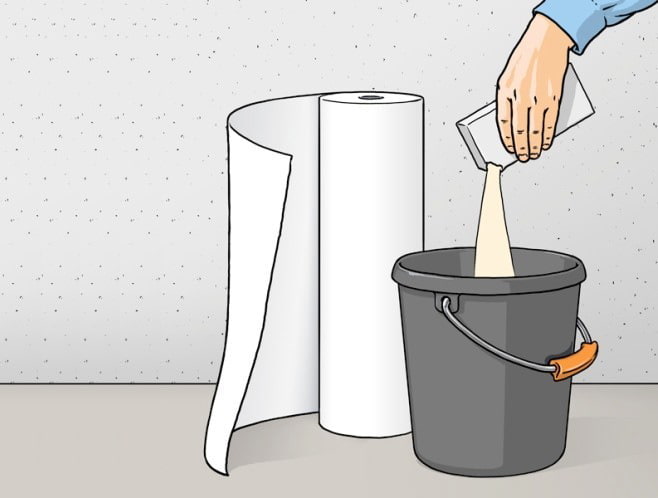
Where to start gluing?
Before cutting the wallpaper, you need to mark the room, marking the places of future joints with lines. If the room is glazed, the first strip is glued level from the window. Further, the stripes are marked up to the corner, and so on in the same direction to the door. Bypassing the doorway, the stripes are stacked further up to the same window. Places under it and above it are pasted over last.
When the preparatory processing of the walls in the corridor or other room without windows is completed, the walls are also marked before gluing the wallpaper.In this case, a doorway can serve as the beginning (if there is enough space nearby to lay a whole strip without a longitudinal bend). Another way is to glue the wallpaper from the corner.

What order should be followed, or what earlier?
When performing work, it is important to adhere to the correct sequence of actions. This applies to the order of repairing walls, ceilings, installing door frames, windows, skirting boards, flooring, etc.
Wallpaper or stretch ceiling installation?
The ceiling structure is installed before it is time to glue the wallpaper. This is necessary in order not to damage the already glued strips during the installation process.
Wallpaper or floor? (laying laminate, linoleum, parquet)
First, the flooring is performed. To lay a screed means to dissolve dirt in the room, which will inevitably fall on new walls.
Wallpaper or door installation?
The door frame must be installed before wallpapering. Cashiers are not needed yet. They will cover the cut points of the strips when adjusting the dimensions.
Wallpaper or ceiling?
It makes sense to paste over the ceiling, since when performing these works, glue can get on the surface of the wallpaper, which has been glued to the walls.
Wallpaper or baseboard (fillets)?
Overhead skirting boards are installed last after the room is pasted over. The moldings are glued earlier, and the length of the strip is already adjusted to them.
Step-by-step instructions for gluing wallpaper yourself
After preparing the wall surfaces and installing all the necessary elements, the room is cleaned. The floor is covered with plastic wrap. Marking is applied and 5-6 strips of wallpaper are cut. They dilute the glue, and begin to glue.
The sequence of application to walls and stripes depends on the type of wallpaper.
Links to detailed gluing instructions:
Each type involves the use of a specially developed gluing technology.
How to glue wallpaper with a pattern fit?
It is important to consider a number of features:
- The mark contains information about the size of the offset of the pattern.
- The strips are cut with a margin of the specified number of centimeters.
- After gluing, they look to match the pattern.
- If necessary, the strip is separated and glued already with a shift.
The excess stock is trimmed with a wallpaper knife along the attached wide metal spatula.
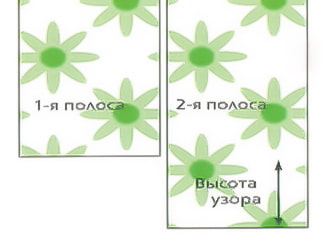
Secrets of gluing wallpaper side by side or how to hide the joints?
This requires:
- Glue the wallpaper on a flat surface.
- Fit stripes as close as possible.
- Roll the joints with a special roller.
- Wipe the glue that has come out dry.
So that the joints do not lag behind, before gluing the wallpaper, they are carefully coated with glue.
The nuances of gluing with an overlap
The following factors are taken into account:
- The overlapping strip is on one side.
- The upper wallpaper is abundantly coated with adhesive.
- The joint is rolled with a rubber roller with pressure and I wipe off the excess glue completely.
So that the overlap is not noticeable, they begin to paste over from the door to the far corner of the room so that the ends of the wallpaper are not visible.
Technique of gluing meter wallpaper
There are several factors inherent in a one meter wide wallpaper:
- The glue is applied only to the wall.
- If mistakes are made, you can remove the fresh canvas and glue it again.
- It is difficult for one to do the work.
- The material allows you to adjust the joints by smoothing.
How to glue one person?
This is convenient when the wallpaper is thin, light and not wide. Wherein:
- The oiled strip is folded to leave the top third of the impregnated side open.
- Wallpaper is applied at the top and smoothed from top to bottom.
- The folded part unfolds and is pressed to the floor along the longitudinal axis.
- Air and excess glue are expelled from the middle to the edges.
After that, the joints are rolled with a roller.
Video instruction
How to glue in hard-to-reach places?
The specifics depend on what the complexity is.
Corners
The processes of pasting the inner and protruding corners are technologically different. Detailed information on gluing corners can be found here.
To the ceiling
The technology is specific and requires separate consideration. The main thing is to glue the wallpaper from the window into the interior of the room. Detailed information on gluing wallpaper on the ceiling can be foundhere.
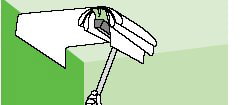

Behind the battery
Fragments are cut, wallpaper and wall are coated, gluing is performed according to the developed technology.
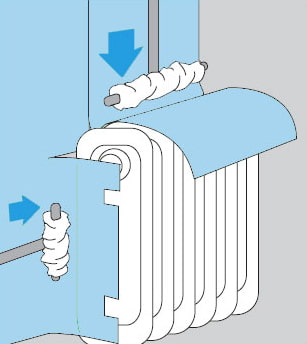
Around the window (under the windowsill)
A strip is being prepared, in which the outline of the window opening has been cut out, which is covered with wallpaper. Separate elements are glued and procured according to the dimensions of non-closed areas. Under the windowsill, the procedure is identical.
Behind the gas water heater
It is forbidden to dismantle gas equipment on your own. But the body can be removed. It is necessary to glue it so that after its installation there are no “bare” areas.
Behind the gas stove
Technically, it can be glued if the plate is connected to the gas supply system with a flexible hose. It is forbidden to dismantle rigid pipeline connections yourself.
Under the air conditioner
It makes sense to dismantle the structure and glue the wallpaper all over. The main thing is to measure out where the holes for the fasteners are. It is not difficult if you insert a toothpick, nail or screw in a self-tapping screw during glueing.
With stretch ceiling
Wallpaper can be driven under the guides or glued close to them.
Arch
The elements involved are cut according to pre-measured patterns.
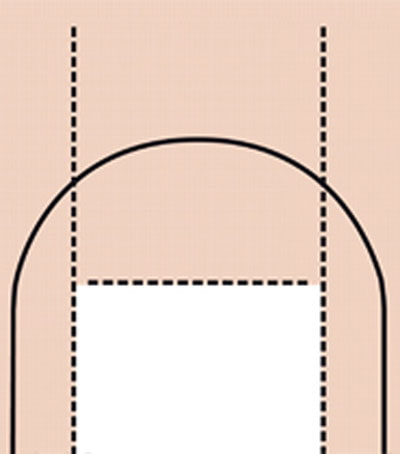

Over the doorway
There will be only one joint. The covering consists of two stripes, in which segments are cut in accordance with the sections of the opening covered by the wallpaper.
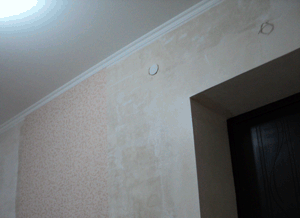

On the slopes of a door or window
The cut is adjusted close to the bend. The corner is mounted using a special profile, which is covered with plaster and remains perfectly flat.
On a flight of stairs
If it is not possible to dismantle the stairs, you will have to measure and cut out each element of the wallpaper in order to glue the finished fragments.
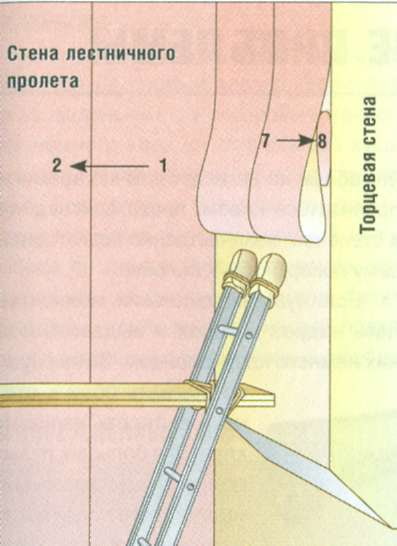
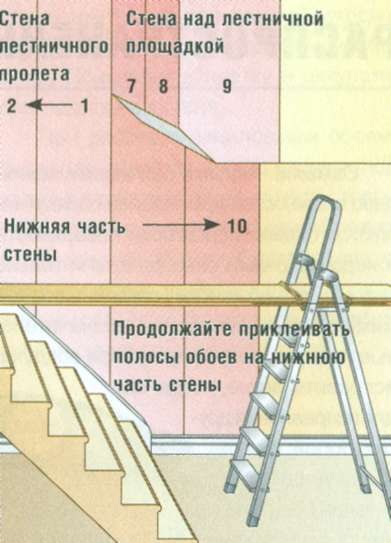
To an uneven wall or a wall with a ledge
It all depends on the configuration and the size of the problem. Sometimes you have to cut and glue with filigree precision.
On wires
Electrical communications that are not embedded in the wall should not be glued. It is better to disconnect the cable, make repairs, and then reinstall it.
Near outlets and switches
The electricity is cut off. Sockets and switches are dismantled or sealed with masking tape. The wall is pasted over. Places of sockets and switches are cut out with a wallpaper knife.

Behind the pipes
The strip is inserted into the space between the wall and the pipe, without touching the missed side. Then the standard procedure is followed.
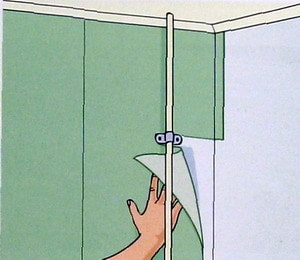
Niche
The procedure is identical to pasting inside corners. But if the dimensions are small, you will have to measure and prepare the elements in advance.
Ceiling beams
The technology is the same as for pasting the ends of partitions, niches and arches.
In the attic with a slope
The order, direction and sequence is the same as when pasting vertical planes.
How long do they dry?
Drying time depends on the density of the materials and the room temperature. Under normal conditions, in accordance with the type of wallpaper, the time indicated in the table should elapse before complete drying:
| Wallpaper type | Time to dry completely |
|---|---|
| Paper | 8-12 hours |
| Non-woven | 12-18 hours |
| Vinyl | 18-24 hours |
| Liquid | 24-36 hours |
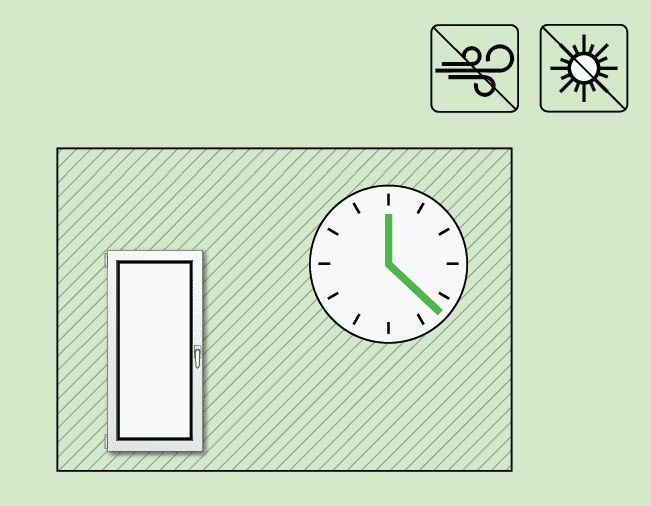
Glue tips for beginners
Those who make repairs for the first time need to consider:
- A special glue composition has been developed for each type.
- Attractive design ensures high accuracy.
- Bubbles are unacceptable. They are kicked out, not pierced.
- It is better to use a specialized tool from the list above.
- Before gluing the wallpaper, read the recommendations and watch the video.
It is important that the planes are prepared and that the drying time is sufficient. In this case, the wallpaper will not lag behind.

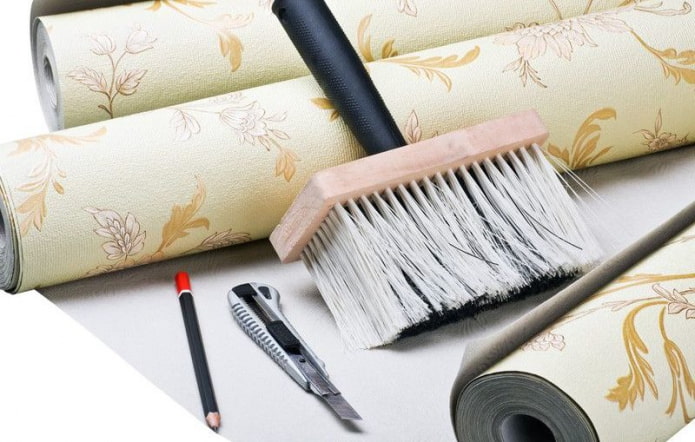
 10 practical tips for arranging a small kitchen in the country
10 practical tips for arranging a small kitchen in the country
 12 simple ideas for a small garden that will make it visually spacious
12 simple ideas for a small garden that will make it visually spacious
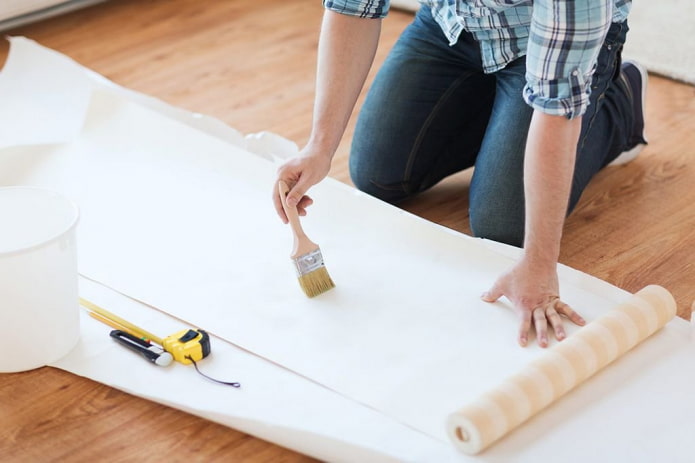
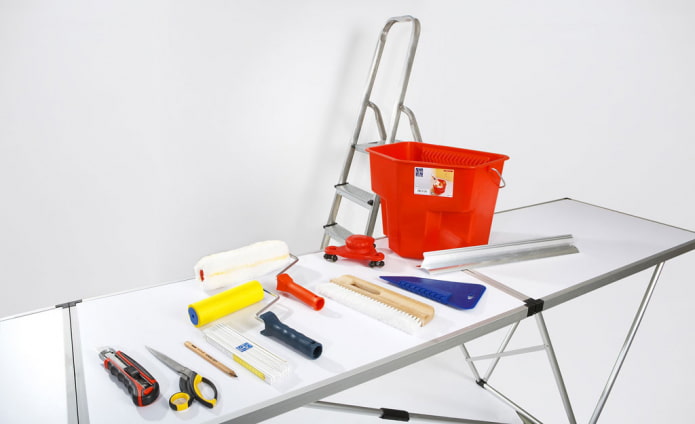
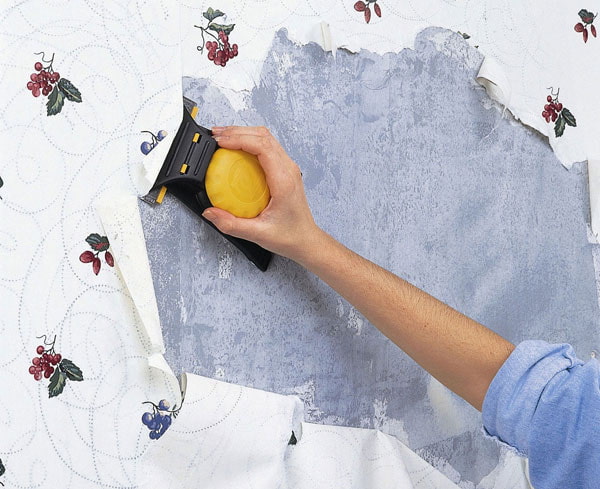




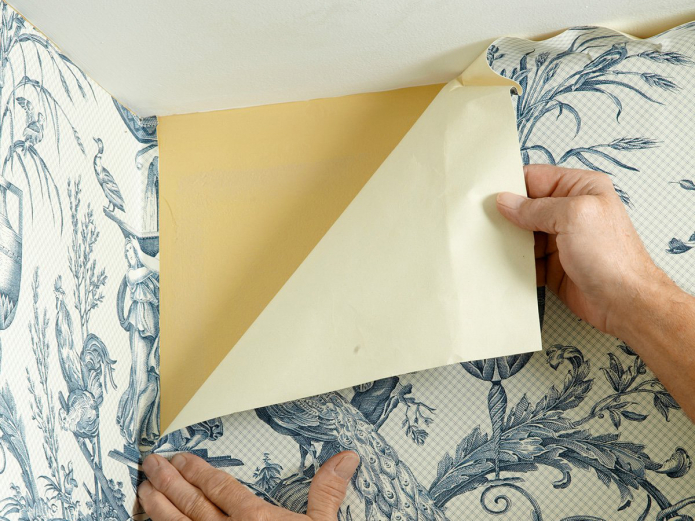
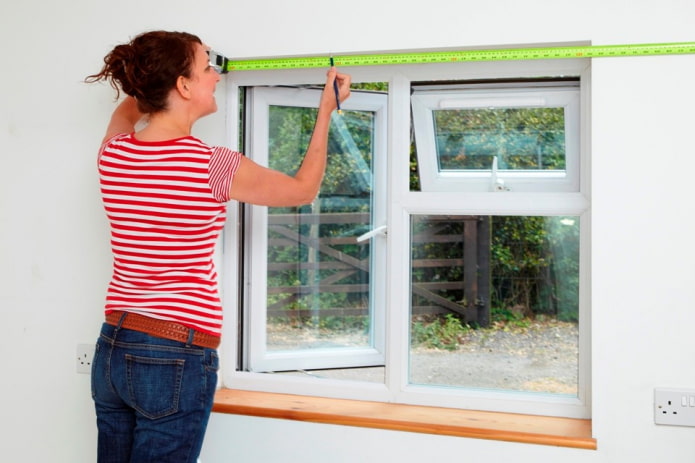
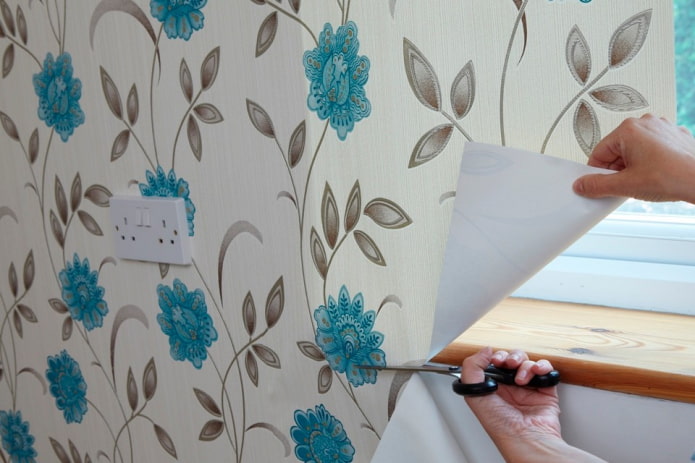
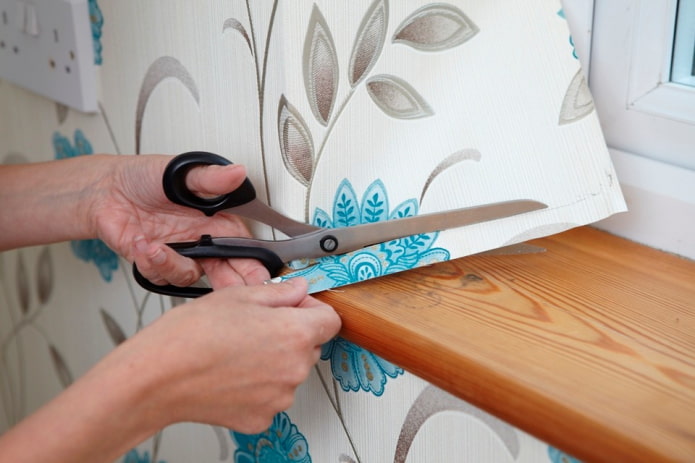
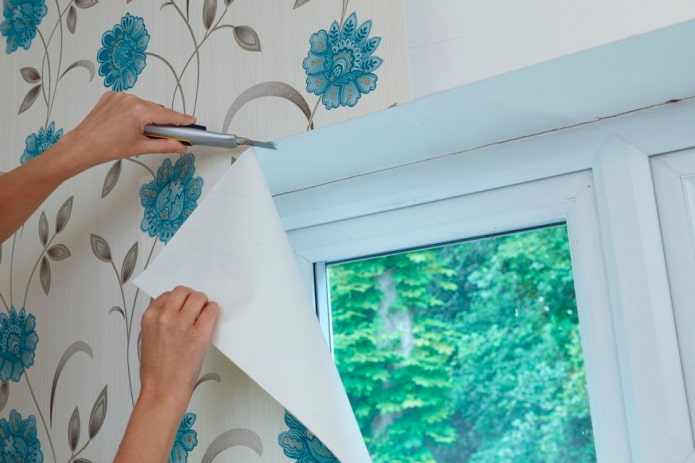

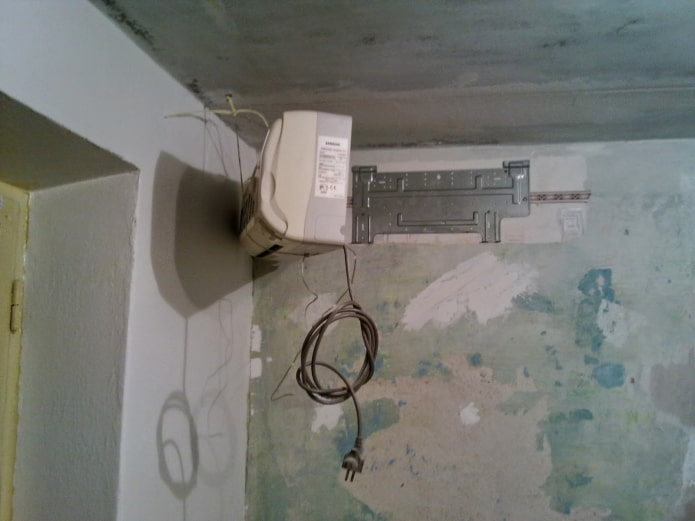
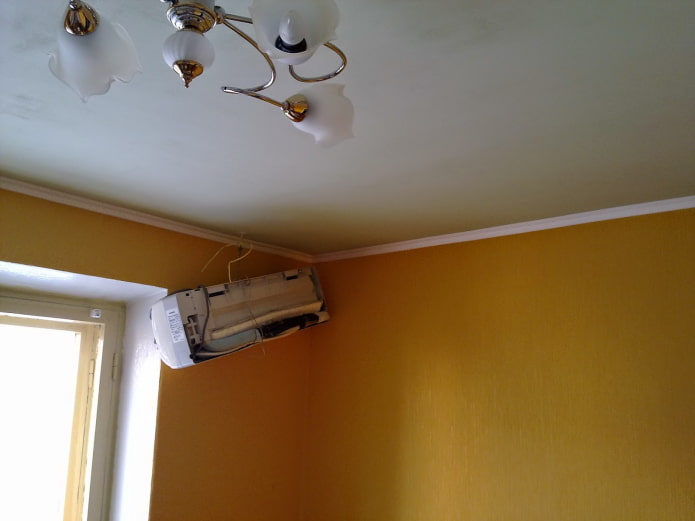

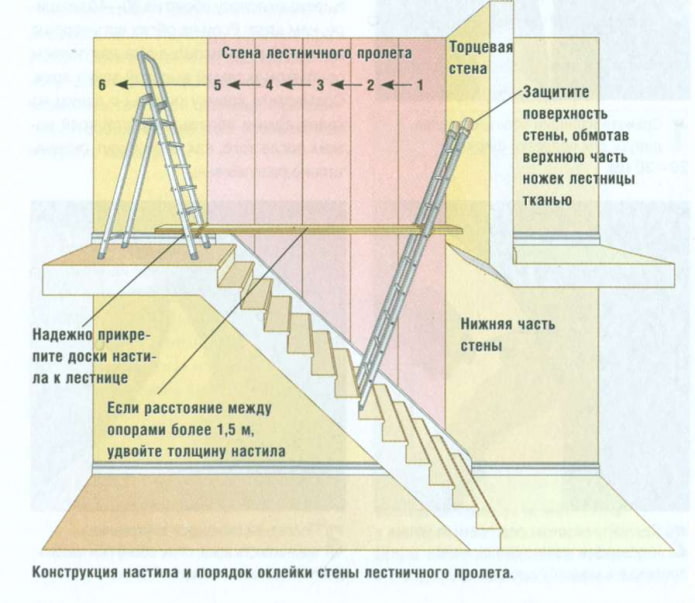
 What is better not to do it yourself during the repair?
What is better not to do it yourself during the repair? Bloated linoleum: how to fix it without disassembly
Bloated linoleum: how to fix it without disassembly The worst decisions in apartment renovation
The worst decisions in apartment renovation  Installation of ceiling tiles: choice of materials, preparation, order of work
Installation of ceiling tiles: choice of materials, preparation, order of work How to glue a ceiling plinth to a stretch ceiling?
How to glue a ceiling plinth to a stretch ceiling? Ceiling plinth for stretch ceiling: types, recommendations for selection
Ceiling plinth for stretch ceiling: types, recommendations for selection